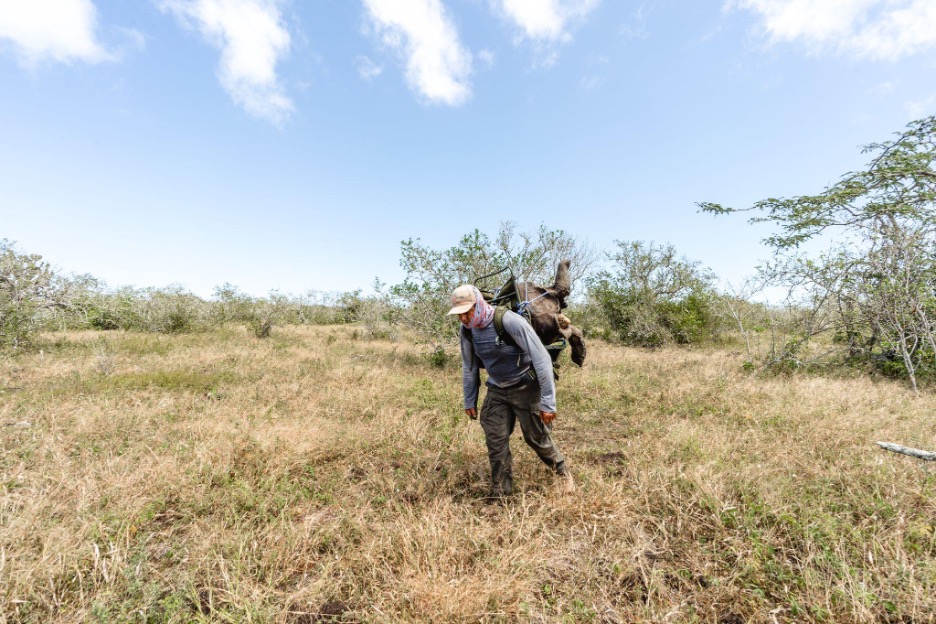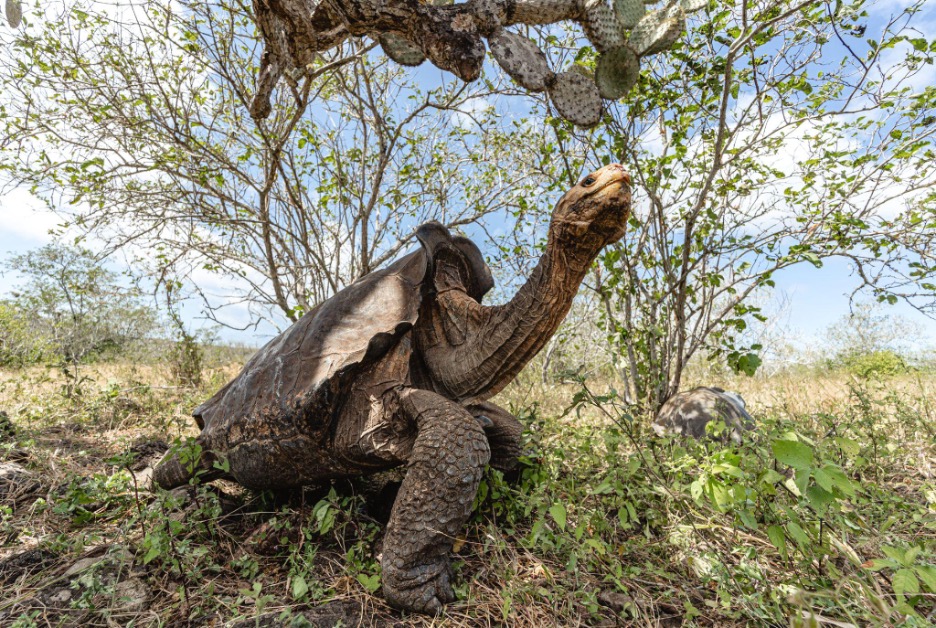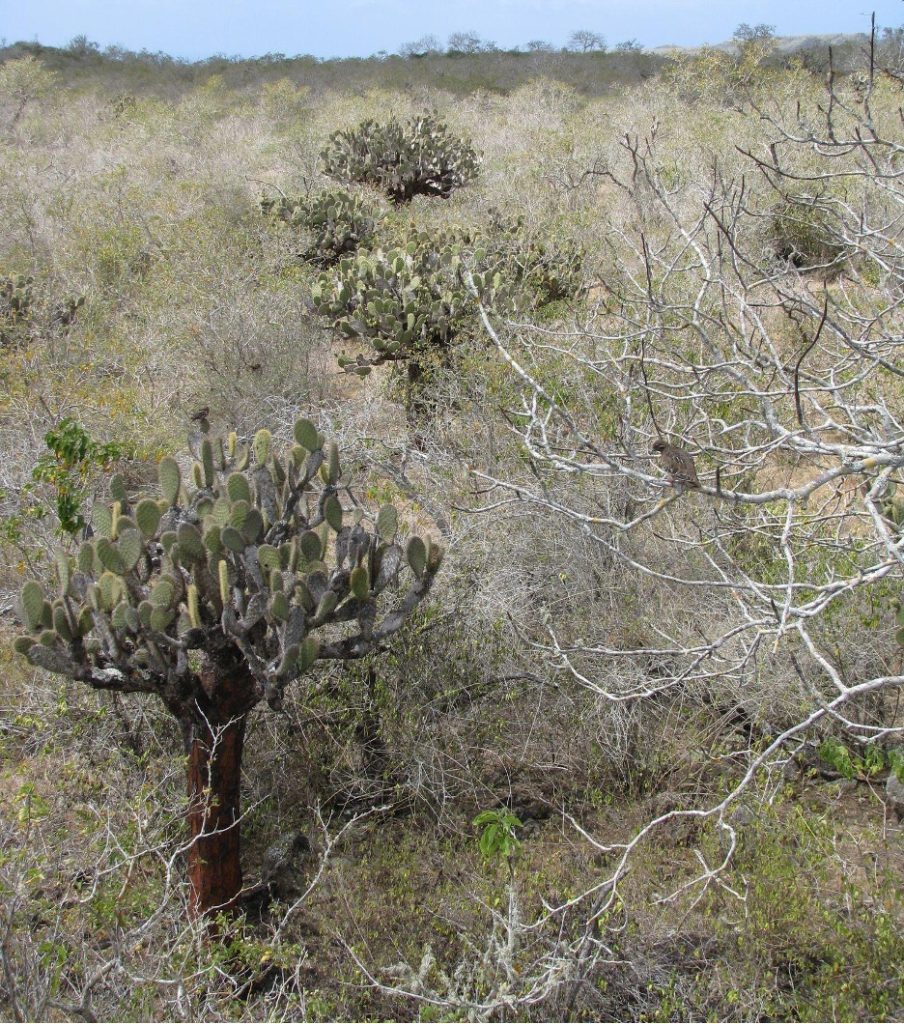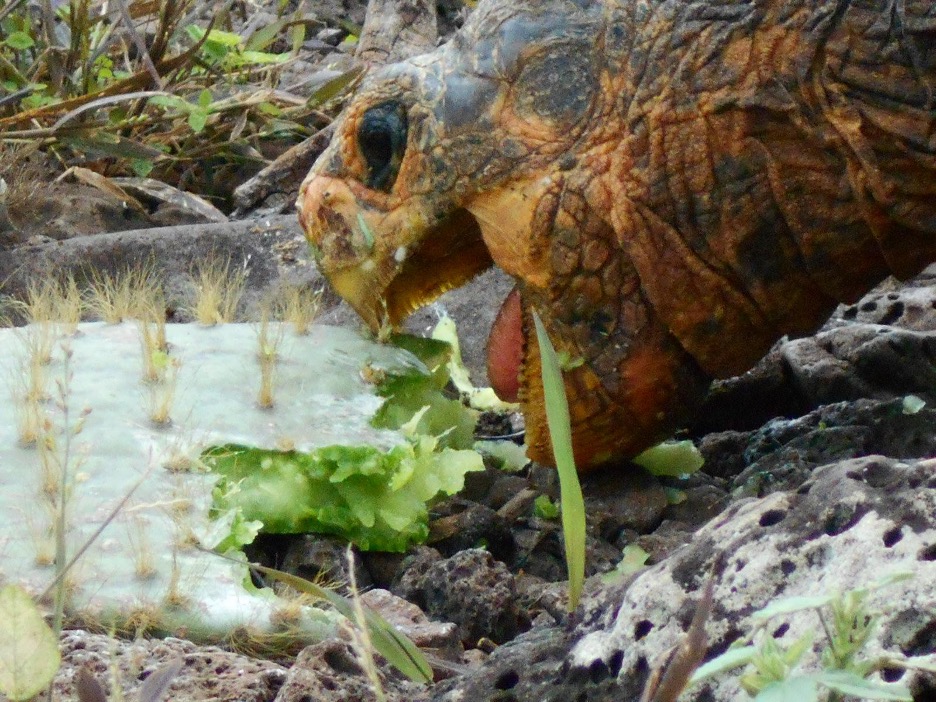Home for the Holidays: Diego, the Famous Giant Tortoise, Goes Home After a Century
Date: December 22, 2022.
By: Dr. James Gibbs, Vice President of Science and Conservation
The holidays are a time when many of us go home and reunite with family. For Diego, an old male Española saddleback tortoise, Chelonoidis hoodensis, his homecoming took almost 100 years!
Diego’s time away was more work than leisure. Taken off his home island in the 1930s, he lived at zoos in New York and California before being transferred to the captive breeding center on Santa Cruz Island in the early 1970s. There he became well known for his ardent efforts of fathering a thousand baby tortoises. He finally returned home to Española Island in June 2020, joining his many offspring and grand-offspring released there earlier.

So how does a tortoise like Diego get reestablished in the wild after almost a century in captivity? Following decades enclosed by concrete walls with regular “room service” of food and water, Diego is now back where he started, a wild tortoise relying entirely on his wits to get by.
Diego’s new life would be a mystery without the GPS tag we attached to his shell upon release, nicely nestled in an out-of-the-way spot on his magnificent saddleback carapace. The device wakes up six times a day and sends Diego’s location to us via satellite, allowing us to do a remote “wellness check” on the old tortoise without disturbing him and learn a little about how and what he’s doing.

Mapping Diego’s day-to-day movements tells us he is remarkably spry for an old fellow (of 150 years?). While he has chosen to live in a tiny area of barely 1×1 km, he has traveled at least a total of 52 km (32 miles), likely much more when you add in all the twists and turns he has to take to get around the shrubs and bushes in his new home.
Liberated on June 15, 2020, Diego’s first day was his longest. He completed 2 km of walking around before settling underneath a cactus tree he discovered (or maybe remembered?). He mostly stayed put under the cactus tree through late 2020 as the island dried out—there was little to eat aside from the occasional cactus pad and fruit falling from the tree —and made only a few short forays to explore his new neighborhood. Those short forays were likely to go explore “tortoise rocks” that capture water in their cracks and surfaces during brief bouts of garúa (mists)—tortoises can get a quick drink if they move quickly, climb onto these rocks and sip from the puddles formed while they last.


With the arrival of rains in the first half of 2021, Diego grew bolder, first making a tentative foray out to the southeast of his home cactus, discovering and stopping at a new cactus tree for a few days before quickly returning home. Through the end of 2021 and into early 2022, he repeated this commute, with extended periods under each of the two cactus trees he now calls home. He likely claims this territory and excludes other male tortoises, while admitting any females who wish to join him under the cactus in the hopes they might mate with him.
Early 2022 ushered in a dramatic new phase of Diego’s homecoming. With the rains in March this year, Diego started regular, ambitious, and ever-expanding circuits of the nearby terrain, alternating stops at the two cacti he now calls home. For several months he ambled about grazing on the new grass growth during the short period it is green. He has dramatically expanded his home range in year two back home. Since July he has again settled back at his two favorite cacti and seems to have added a third cactus in late 2022, where he now awaits the next wet season, snacking on any lingering herbs and making short forays to drink at tortoise rocks when garúa falls.
Now in his second full year back home, Diego maintains a typical tortoise life cycle on Española. During the dry season, he stays put under a few cactus trees, mostly resting and metabolizing his nutritional reserves, while becoming highly mobile (for a tortoise) during the brief wet season to eat all he can before things dry out and he heads home again. We have learned that when he turns, he often turns to the right (maybe conservative leaning in his old age?), but we have no idea why this is so.
We have mapped Diego’s perambulations from his release in June 2020 to Thanksgiving 2022. His tracker is nearly at the end of its life, and he goes “offline” next year. Then he will lead a truly solitary secret tortoise life known only to him.
We are glad to know Diego is finally home and hope to come across him on occasion during future visits to the island. His story has been long and eventful, during which he helped save his species from extinction. Now he can finish out his great life back where it started, living the simple existence of an older tortoise among his thousands of children and grandchildren on Española Island, where he will likely thrive for many years to come.




